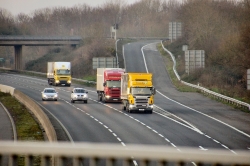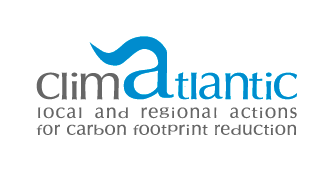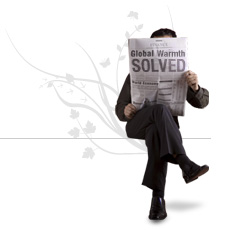NEWS & EVENTS : MOBILITY

Technological solutions and behavioural change needed to decarbonise transport
12.17.2015
A new report by the European Environment Agency (EEA) analyses key environmental trends with a view to identifying what has improved and what has hampered the past performance of the transport sector.
climatlantic //
The transport sector affects the environment in different ways. It leads to emissions of greenhouse gases (GHG) and air pollutants, it is the main source of environmental noise and it leads to habitat fragmentation. The European Union has a wide range of policies from nature protection, noise, fuel quality to air quality, which have resulted in some significant improvements in environmental performance. For example, new cars and vans sold in Europe are using less fuel per kilometre, releasing less carbon dioxide and air pollutants. On the other hand, however, an increasing number of Europeans are buying cars, driving and travelling longer distances, and buying goods transported across the world.
The EEA's new report 'TERM 2015, Evaluating 15 years of transport and environmental policy integration' analyses the evolution of the transport sector (freight and passenger) and its impacts on the environment since 2000, including the impacts of the economic recession in 2008. The report concludes that a fundamental decarbonisation of the transport sector will require not just technological solutions but also policies that stimulate significant behavioural changes, including the correct pricing of transport externalities and planning approaches that stimulate the use of sustainable modes of transport.
Selected facts
∑ GHG emissions from transport increased by 19.4% since 1990. It is the only main European economic sector for which GHG emissions have increased.
∑ In 2013, transport accounted for almost one-quarter of the EUís total GHG emissions (one-fifth excluding international aviation and maritime emissions). Passenger cars contribute almost 45% and heavy duty vehicles a further 20% of the transport sectorís emissions.
∑ As a result of EU legislation, transport emissions of three important air pollutants SOx, NOx and PM decreased in the period 2000 to 2013 in the EU. Particularly for NOx from diesel cars, but also for CO2, there is an increasing difference between Ďofficialí emission measurements compared to real-world driving emissions, an area of concern.
∑ Road traffic noise, both within and outside urban areas, is still the most important source of environmental noise in the EU. Around 125 million people were potentially exposed to noise levels exceeding 55 dB Lden in 2012.
∑ A sharp fall in freight demand occurred in the years immediately following the economic crisis and, following a limited recovery, freight volumes have since remained largely stable. In 2013, total freight transport was 7.3% higher than in 2000.
∑ Passenger transport increased until 2008, but it has remained broadly stable following the economic recession. In 2013 the number of passenger-kilometres was 8.4% higher than in 2000.
∑ Between 2000 and 2013, the proportion of diesel in energy consumed by road transport increased substantially. Financial incentives by many European governments have encouraged the uptake of diesel engines. The number of electric vehicles has grown but is only a minimal proportion (0.07%) of total passenger car fleet numbers.
Despite EU policies designed to encourage greater use of environmentally friendly transport modes, car transport remains the dominant mode of passenger transport. Air transport is the fastest growing mode of passenger transport.
Modal shift is a central element in the EUís decarbonisation ambitions, as improvements in energy efficiency alone are often insufficient to reduce transportís environmental impacts. Achieving the aspired modal shift would require significant investments in infrastructure, complemented by other measures to promote more environmentally friendly transport models. Innovations such as intelligent transport systems, new business models and autonomous vehicles may increase the future efficiency of the transport system.
Related content:
http://www.eea.europa.eu/publications/term-report-2015








